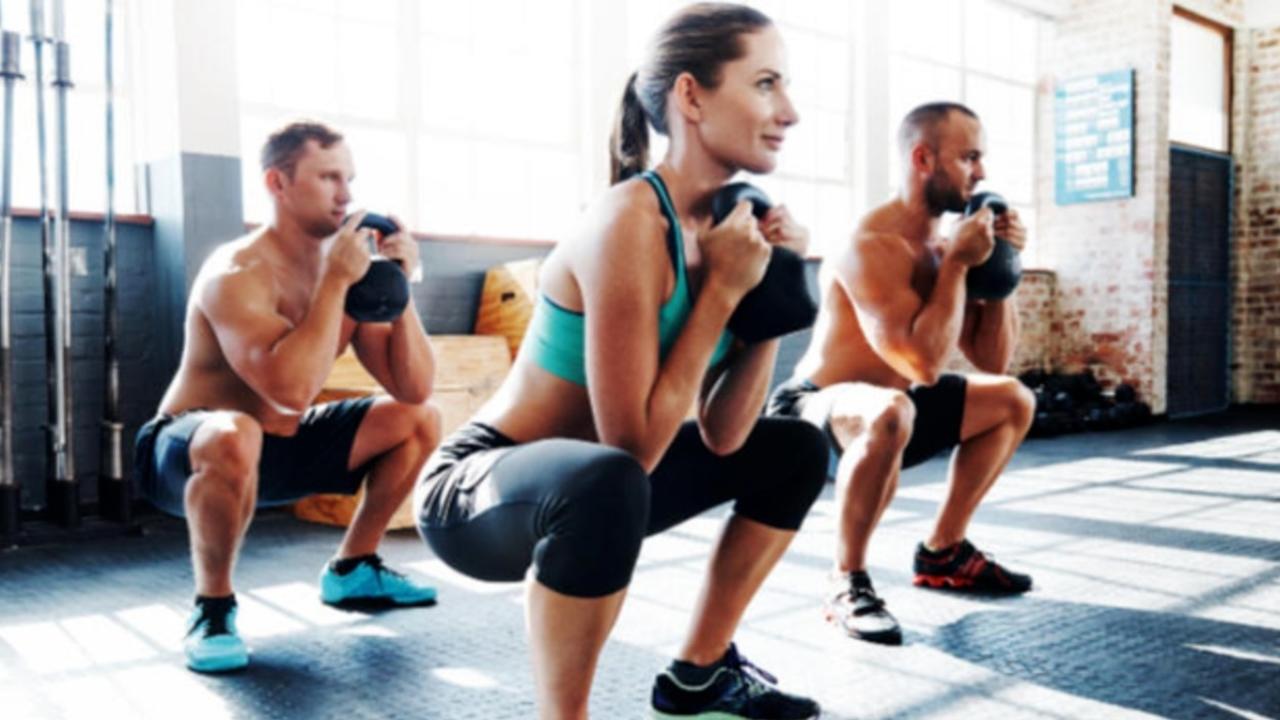
The Metabolic Effect Workout
This is the original 20-minute, home-based, do-anywhere Metabolic Effect workout. It was one of the first examples of short-duration, high intensity, dumbbell based metabolic conditioning on the market. Led by Dr. Jade Teta and Jill Coleman of www.jillfit.com
The Science behind the Metabolic Effect (ME) incorporates the latest understanding in endocrinology, health, fitness, strength and conditioning research. ME is a science-based program focused on changing the fat-burning hormonal response to exercise and diet. By changing hormones, rather than simply eating less or exercising more, the body naturally regulates fat burning, appetite, and mood so that motivation for exercise is enhanced while cravings for food are reduced.
The latest in exercise research says that intensity (how hard you exercise) may be as important, and perhaps more effective, than duration (how long you exercise) (1). This is good news for those who are starved for time. Longer more traditional forms of exercise, like running or jogging, burn calories during exercise, but can negatively impact key hormones responsible for calorie use at rest (2), (7), (8). Smart exercise uses short, focused bouts of exercise focused on weight training and intervals to "turn on" fat burning hormones (3), (4), (15). Research shows these techniques increase fat usage for hours and even days after the activity has stopped and outperform "aerobic zone" exercises like running (5), (6), (9).This is what we refer to as the metabolic "ripple" effect.
This new hormonal approach has other advantages. Traditional forms of exercise, such as moderate intensity aerobic exercise (i.e., jogging, biking, running, or swimming) can negatively alter hunger and stress hormones (10), (11). This leads to increased appetite and cravings for sugary, fatty, and/or salty foods (12), (16). More intelligent exercise using the approaches described above creates positive changes in hormones and naturally regulates food intake (13), (14).
All exercise is not created equal. ME changes the metabolism from the inside out. Change your hormones and the calories take care of themselves.
- Helain, et. al. Postexercise energy expenditure and substrate oxidation in young women resulting from exercise bouts of different intensity. Jrnl Am Coll Nutr 1997;16(2)140-146.
- Jacks, et. al. Effect of exercise at three exercise intensities on salivary cortisol. Journal of Strength and Conditioning Research. 2002;16:286-289.
- Ottosson, et. al. Effects of cortisol and growth hormone on lipolysis in human adipose tissue. Journal of Clinical Endocrinology and Metabolism. 2000;85:799-803.
- Bell, et. al. Effect of concurrent strength and endurance training on skeletal muscle properties and hormone concentrations in humans. European Journal of Applied Physiology, 2000;81:418–427.
- Osterberg, et. al. Effect of acute resistance exercise on postexercise oxygen consumption and resting metabolic rate in young women. International Journal of Sport Nutrition and Exercise Metabolism. 2000;10:71-81.
- Schuenke, et. al. Effect of an acute period of resistance exercise on excess post-exercise oxygen consumption: implications for body mass management. European Journal of Applied Physiology. 2002;86:411-417.
- Samra, et. al. Effects of physiological hypercortisolemia on the regulation of lipolysis in subcutaneous adipose tissue. Journal of Clinical Endocrinology and Metabolism. 1998;83:626-631.
- Kern, et. al. Hormonal secretion during nighttime sleep indicating stress of daytime exercise. Journal of Applied Physiology.1995;79(5):1461-8.
- Trapp, et. al. The effects of high-intensity intermittent exercise training on fat loss and fasting insulin levels of young women. International Journal of Obesity. 2008;32(4):684-91.
- Karamouzis, et. al. The effects of marathon swimming on serum leptin and plasma neuropeptide Y levels. Clin Chem Lab Med. 2002;40(2):132-6.
- Broom et. al, Influence of resistance and aerobic exercise on hunger, circulating levels of acylated ghrelin, and peptide YY in healthy males. 2009;296(1):R29-35.
- Church, et. al. Changes in weight, waist circumference and compensatory responses with different doses of exercise among sedentary, overweight postmenopausal women. PLoS One. 2009;4(2):e4515.
- Erdmann, et. al. Plasma ghrelin levels during exercise - effects of intensity and duration. Regul Pept. 2007;;143(1-3):127-35.
- Bozinovski, et. al. The effect of duration of exercise at the ventilation threshold on subjective appetite and short-term food intake in 9 to 14 year old boys and girls. Int J Behav Nutr Phys Act. 2009;6:
- McMurray, et. al. Interactions of Metabolic Hormones, Adipose Tissue and Exercise Sports Med. 2005;35(5):393-412.
- Epel, et. al. Stress may add bite to appetite in women: a laboratory study of stress-induced cortisol and eating behavior. Psychoneuroendocrinology. 2001;26(1):37-49

